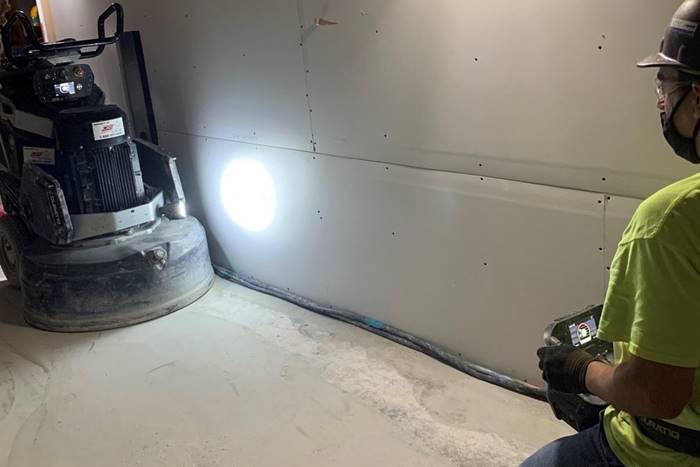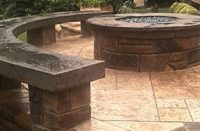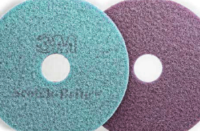
Edgework for polished concrete can be difficult to perform. Even with best practices, the edges many times won’t look like the rest of the floor. There are many variables in concrete construction you can’t control. Variables such as whether the walls are built before or after the pour, whether the finisher used a small power trowel and consolidated the edges, or whether the edges were hand troweled.
Hand finishing simply can’t put the same amount of pressure on a blade. Hands don’t move as fast or in as perfect a pattern as something mechanical. Therefore, doing all the best practices becomes even more important!
Make sure your tooling is flat when placed on the concrete. When the grinder isn’t under power, rocking tells you the segments have worn unevenly. To get a uniform cut and scratch pattern, you must start with uniform tooling.
Next check the grinder itself to ensure the equipment is running well. Hand grinders are notorious for overheating and burning out due to poor air circulation from dust/dirt collecting at the air intake. They also overheat because we tend to smother them with our hands to produce greater down pressure.
Proper edging technique
Although many people do this differently, the most common edging method is to start by moving along the wall from left to right. Next, come back along the wall (right to left) in the same path. Then go along the wall (left to right) one more time.
This time, as you travel back from right to left, do a circular motion that will encompass another two-thirds or more of that path’s width. This will blend or erase the strong line created during your parallel motions.
Now, when the larger-format grinder heads into that wall/object/whatever, the grinder will work into that edge grinder path, further erasing that path along the wall. The goal is to blend the floor into the edge so well that an untrained eye can’t tell the difference.
Here’s the tip
The exception to this golden rule — “edge before floor” — is when there’s a coating, patch material or adhesive to remove. In these cases, it’s better to let your large-format grinder do most of the removal (within a few inches of the wall).
This is because the hand grinder or edger wasn’t designed to have the power/torque to muster through that extra layer. When some of the layer is removed, the edging will go much faster and the result will be much more uniform.
Once you remove the layer, you must catch up by doing the next grit of edges before moving forward! Remember edge before floor for every grit.













